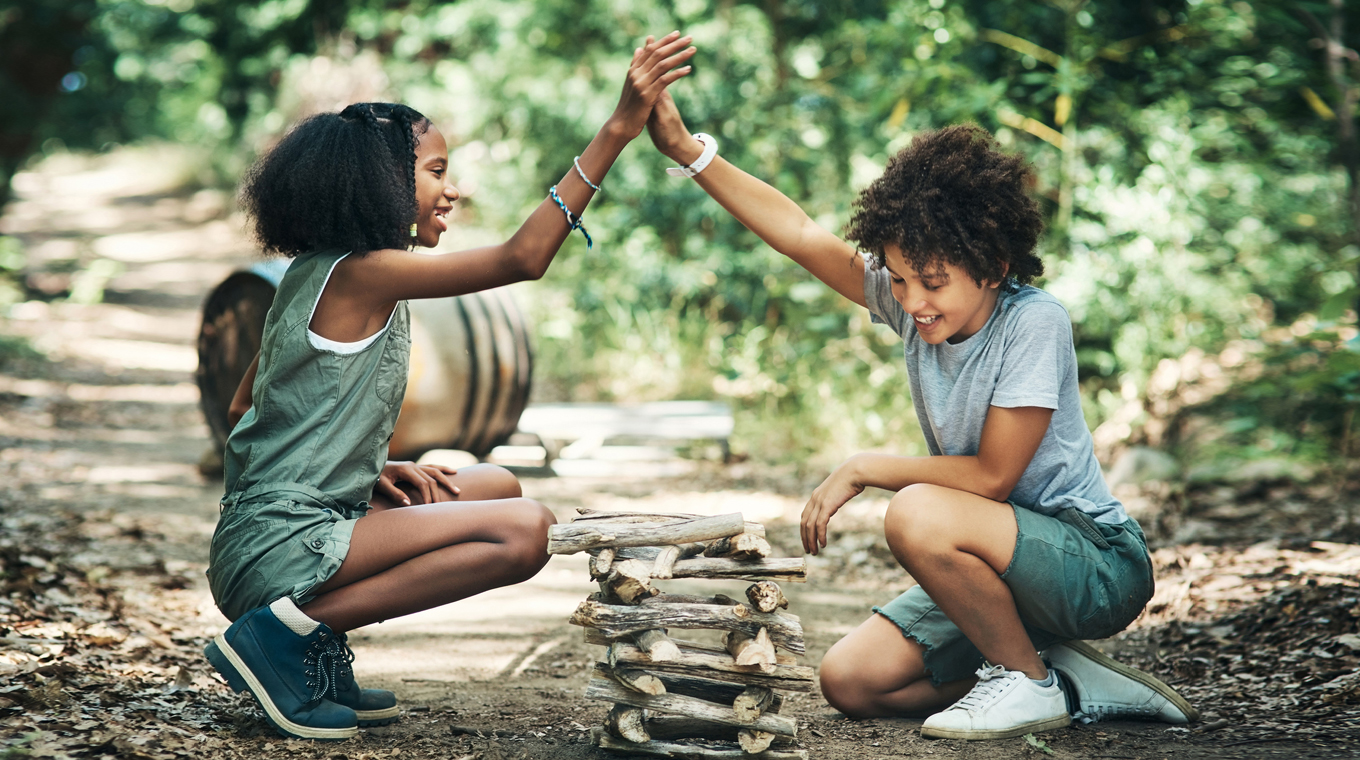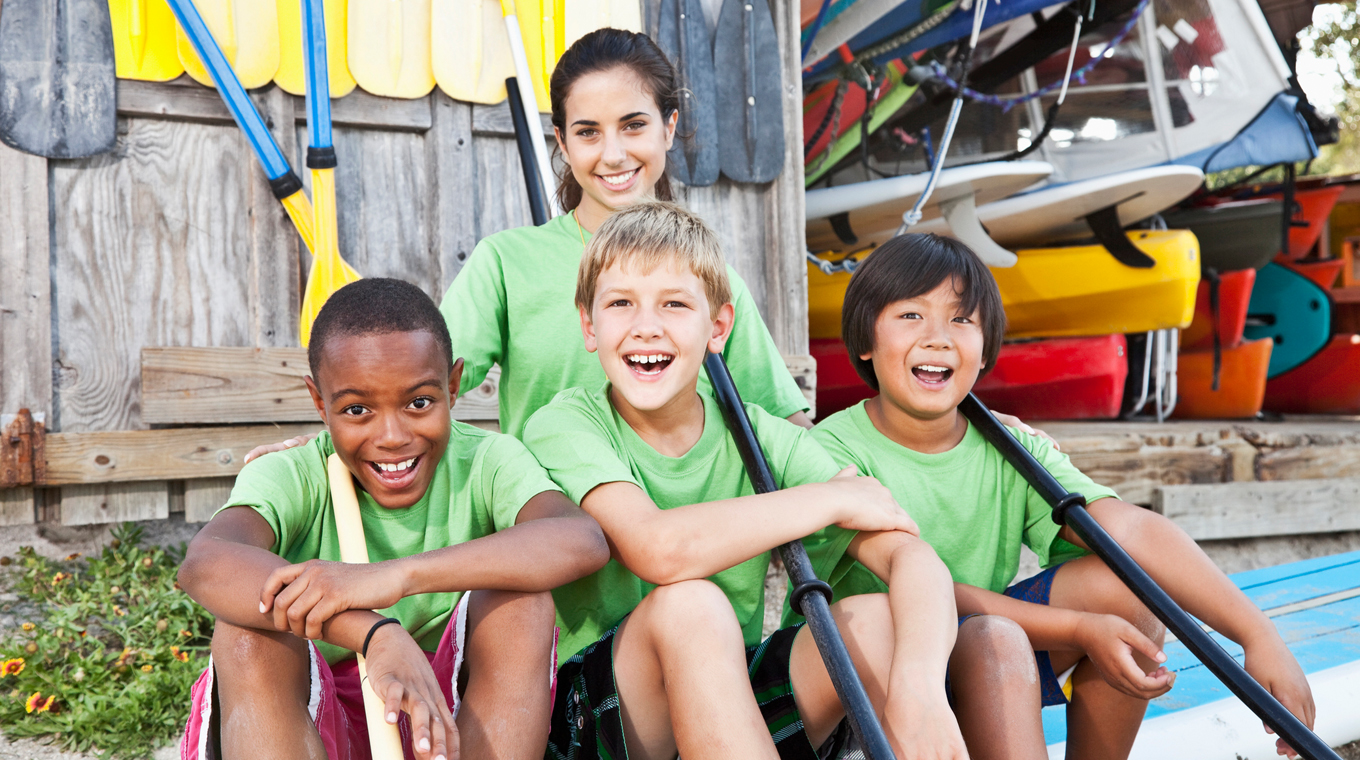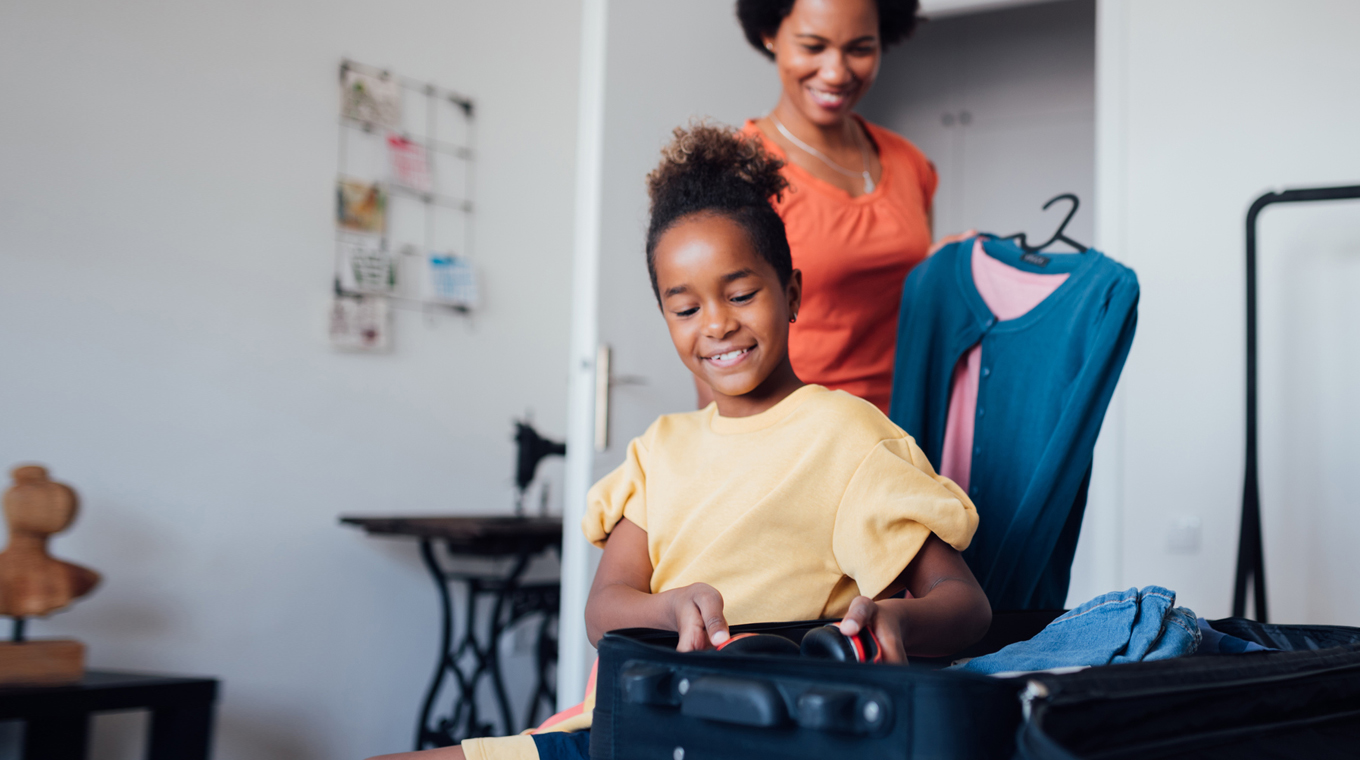In this article
Registration is complete, permission slips are signed. Your happy camper is counting down the weeks until summer camp starts — and you're excited you get a break from being the full-time activities director. But, as the school year draws to a close, you may be dreading the whole summer camp packing process. What if you forget something? How can you possibly relax?
No need to stress, we've got some ideas to help you make sure you don't leave anything off of your kids summer camp packing list, plus some tips to help streamline your packing so your child doesn't end up bringing their entire wardrobe along.
Get ready for summer camp!

Once you register your child with a summer camp and pay dues, you'll likely receive a new camper checklist with all the information necessary for a successful camp experience. Included in the checklist might be a list of what items your camper is expected to bring, what items the camp provides to them, and those items that kids are probibited from bringing.
If anything seems unclear or if you have questions, it's important to contact the director or a staff member right away to clarify any confusing points. The earlier you work out these issues, the more streamlined and relaxing camp will be for both caregiver and kid.
Choosing a bag for summer camp
Before you can begin thinking about what to pack, you first need to figure out how they’re going to get everything there. When choosing a bag for summer camp, you'll want to make sure it's durable and will fit everything they need to bring, but you’ll also want to ensure it's manageable so you don’t overpack.
Typically, most campers opt for a large duffle bag over a standard suitcase. A pop-up, soft-sided trunk is probably a better choice as it’s lightweight enough for your camper to transport it freely, without being cumbersome or taking up too much space.
In addition to a duffle bag or soft-sided trunk, remember this is summer camp and there will likely be hiking involved, so don't forget to pack a daypack or rucksack to carry snacks, water, and other day-trip necessities.
What to pack for summer camp

If you already have a packing list from your child’s camp, packing should be a breeze. But if you’re left to your own devices, some choices are better than others when it comes to what should go in your child’s duffle bag and what should remain at home.
The rule of thumb when it comes to summer camp is that worn-in is best. You don’t want to pack brand-new sneakers or hiking boots, nor do you want to bring expensive t-shirts and swimsuits. Summer camp will include messy activities like painting, tie-dying, mud and dirt, so opt for items you already have at home rather than running out and buying new clothes and the latest gear. Here are a few summer camp packing list items to get you started:
- Two outfits per day and costumes if applicable
- Appropriate footwear for various activities
- Swimsuits, rashguards, and a wet bag
- Sun hat, sunglasses
- Sunscreen and insect repellant
- Water bottle
- Medication if applicable
- Card games
- Journals, stationery, envelopes, stamps, pens, and pencils
- Bedding; sheets, pillows, comforter, and sleeping bag if applicable (note tip below)
- Nightlight
- Flashlight and/or headlamp
You'll also want to check directly with your child's camp to determine what additional items they may need to bring. "Check camp rules for swimsuits before you pack," Diana Hughes told Mom.com. "A number of camps may require swim shorts or a t-shirt over your suit, for all genders," the mom of two explained.
You'll also want to check to see what not to bring to summer camp. It should go without saying that campers are prohibited from bringing items like weapons, fireworks or alcohol to camp, but it's important to find out what else is prohibited at your child's camp, like cigarettes, vapes, matches, lighters, candles or similar items.
Logo t-shirts and inappropriate clothing can also be a concern, and many prohibit phones and other electronics so don't forget to ask about those if it isn't clearly expressed prior to arrival. The last thing you want is to have to trek back to the campground to pick up your expelled child. Be sure your camper also knows the food and snack policy, to alleviate potential safety concerns around allergens and food sensitivities.
And finally, no matter what you decide to toss into the bag, one of the most important things is to make sure everything is labeled. This will alleviate any confusion among campers and help your child keep better track of their belongings.
Packing light? Tips to help keep it simple

When it comes to summer camp packing, less is more, and embracing minimalism can save your camper decision fatigue each morning. "Pack toiletries in baggies that can be used later for souvenirs or to keep things dry on rainy camp days," Jen P. told Mom.com. "And, slip in a note from home and a treat!"
Adhere to the summer camp packing list as closely as possible and follow these packing light tips to streamline packing day.
- Opt for a shower caddy with drainage holes that does double-duty as a toiletry bag
- Pack daily outfits in Ziploc bags including undergarments
- Don't forget leggings or jeans for activities like horseback riding
- Water shoes can also work as shower shoes, no need to pack one pair of each
- Forgo the sleeping bag unless camp requests it; a comforter is best for temperature control
- Pack bulky towels, sheets, wet bags, and pillows in a laundry bag
"One of the things I really love about camp is that you have to downgrade. You live more simply and realize that you don’t need all the comfort or material things that we have at home to be happy or be secure," New Hampshire-based assistant camp director Jess Colgan-Snyder told The New York Times.
While simplicity is the name of the game at summer camp, you'll also want to make sure your child feels as comfortable and confident as possible, especially if this is their first time away from home. If there are particular items your child needs for that to happen, don't feel as though they shouldn't bring them to camp. We want our kids to thrive, and they can do that best when they feel the most confident.
“Whether it’s lotion or a hair product for people with natural hair, we do want kids to have the things that make them feel most comfortable," Colgan-Snyder elaborated.





